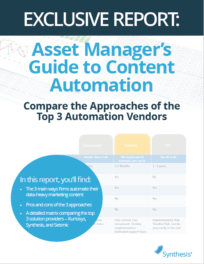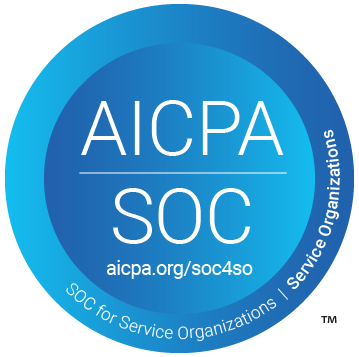Four Ways Asset Management Marketers Can Grow AUM

The shift from active to passive investing continues to drive significant change for investment management sales and marketing. In this article, investment marketing consultants Sandra Powers Murphy and Donna DiMaria explain what marketers can do to help their firms grow AUM in today’s challenging environment.
According to DiMaria, operational efficiency in sales and marketing has become imperative, and asset managers are taking note.
“Firms are looking to be more efficient, doing more with fewer resources both in terms of bodies and budget. And that is leading to consolidation, outsourcing, and automation. The status quo isn’t working anymore so, in a way, the market is recreating itself,” she said.
Outsourcing and Consolidation
In response to cost-containment pressures in the market, many investment managers are turning to third-party marketing firms to outsource sales and marketing functions to help grow AUM. “We’ve seen a lot of prominent investment managers that have just shuttered in the past couple of years because it’s become difficult to sustain the business as a whole. As a result, we’re seeing firm and resource consolidation across the industry at both small and large firms. In the past, managers were hiring to expand their reach, but now we’re seeing consolidation and more outsourcing,” said Powers. Firms are looking to outsourced partners who can assist with recommending and implementing new technologies.
Fee pressure isn’t just hitting investment managers, it’s also forcing change among RIA and wealth management platforms. “They’re rationalizing the firms that they have managing assets for them, both to take advantage of outsourcing platform opportunities and to reduce the time and expense of manager due diligence in-house. For example, in the past, they might have offered ten small-cap managers, but now they’re cutting that list down to five. Firms that are under-performing, heavy on fees, or struggling to garner assets on their platform will get cut. It’s definitely a phenomenon of trying to use resources more efficiently, and it’s happening across the industry as a whole,” DiMaria said.
Digital Strategies
Social Media
Communication in this industry is extremely important, and there has been a fundamental transition over the last several years. Before the digital boom, sales and marketing happened in-person or on the phone, but that has changed. “It’s incredibly difficult to get anybody on the phone today, and people just don’t return voicemails. They want to get your pitchbook by email and log into the databases to see your information. It’s a very big shift for salespeople who are used to selling the traditional way,” said DiMaria.
This new way of selling, coupled with last year’s pandemic, has put pressure on marketing to engage audiences through digital channels. Asset managers who haven’t quite made the shift are now being forced to embrace digital and data-driven marketing. But firms have been slow to adopt, due to the compliance complexity. Social media, for example, has seen very slow adoption in the industry, but that’s changing. In Powers’ latest book, Road to AUM: Driving Assets Under Management through Effective Marketing and Sales, published by Noble Ark Ventures asset managers reported social media as a low priority initiative. “I interviewed well over 30 institutional research professionals,” said Powers. “Not one said social media or social networking was a component (other than a core website) that they looked at, partly due to regulation and how limited the content tends to be. But, we see that changing rapidly as the market finds ways to utilize social media for communications, content and brand building.”
Website
According to Powers and DiMaria, the firm’s website should be the number one priority, as it’s often the firm’s first impression. “Websites are really important because you never get a second chance to make a first impression. People go to the website and they’re going to see your presence. Are you transparent? Are you providing the information that they need? Is it something that could be interesting to their clients? We’ve seen a lot of managers whose websites have little to no information on them. They think just because they have a site they can check the box. Websites are an important source of information, they have to be informative and, when possible, provide information evaluators may not find elsewhere. It will help decision-makers remember you and keep coming back for the information,” said DiMaria.
The cost of implementation has held many firms back from investing in their online presence, but time is running out on that excuse. “Having a good quality, consistent website experience is important, but managers don’t need to overspend. This is a place where managers can be thoughtful and make sure it represents their culture and is consistent with the stories they’re telling in their collateral and through other mediums, as well as in conversations,” said Powers.
Video
Along with the website, video is an excellent place to allocate the budget, as long as it is carefully implemented. Video presents an efficient opportunity for firms to drive home a value proposition very quickly. These videos need to be short, compelling, and extremely well thought out. Powers stressed the importance of using bite-sized content, as to not lose the audience’s attention. “There’s so much content out there. Most of it is too long. The reality is, no one wants to click a button and sit there and watch a video that’s five minutes but feels like 30. An interesting trend we’ll see a lot more of is using a series of short video clips. Managers can use video by creating shorter one-minute segments. For example, a portfolio manager giving one-minute direct feedback on specific aspects of their market segment or strategy.” she said.
Clear, Concise, and Consistent Messaging
With the pressure on fees and dynamic market movements globally, a clear value proposition is crucial for differentiation. Differentiation is a key piece to marketers growing AUM. And it can’t be about the numbers. “Instead of talking about what asset class we’re in, it’s about building the case for how you’re going to fit in the portfolio. It’s about telling your story. The best way to do this is to provide that bite-size level of information online, versus trying to deliver that in a phone message that’s not going to be answered, or a long commentary that’s not going to be read, or a pitchbook where it’s going to be buried in the highlights for next quarter section,” said Powers.
While communicating online is a growing trend, traditional marketing communications like fact sheets, pitchbooks, and commentaries, aren’t going away. The key is making sure messaging is consistent across digital and traditional channels. DiMaria said, “Discrepancies between sales pitches, sales collateral, database responses, and website messaging is not good for firms. The underlying data has to be consistently implemented so that messaging is the same across the spectrum. The key is to ensure your messaging makes an impact. A lot of managers think they have their messaging down, but in most cases, the message doesn’t really identify the value they provide to investors. Saying, ‘Our differentiator is performance or our research process’, is basically saying nothing.”
Getting the messaging right is going to take collaboration across the enterprise, getting higher-level subject matter experts to come together to agree on the strategic positioning. Then, those same stakeholders must get involved in the communications in a way they are most comfortable with, whether that’s a blog post, video, a podcast, a presentation or a combination of all of these touchpoints.

Content Strategy & Automation
Once a firm has established a strategic position, it’s crucial to communicate that message through the right mediums. Traditional sales collateral materials are still a key part of the mix, but the execution has changed. DiMaria explained, “All of these materials must be easily accessible and provide the information that people want to see. Investors need a quick and easy way to see this information.”
The pitchbook has always had a starring support role in the sales process, but it’s becoming the main act. If marketers want to grow AUM, they need to enable the sales team. DiMaria said, “You need to make sure all the salient information is in there for an evaluator when they determine whether or not to move forward with the strategy. So, pitchbooks are becoming very pivotal in determining whether or not somebody’s going to look at you further.”
Again, it’s critical that the pitchbook is consistent with what appears across all marketing and sales channels. “Automation is very beneficial to content production because, without it, we see many errors. These errors lead to inefficiencies, which makes a great case for automation. The more efficient your process, the broader your reach. The market will begin to view the firm as an effective, timely and accurate resource for investment management intelligence. And that is what creates opportunities for growth,” said Powers.
Automation also helps drive seamless inter-connectivity between marketing mediums. Firms can no longer look at the factsheet, website, or pitchbook in isolation. So, updates to messaging or data in one medium must carry through to the rest of the firm’s marketing outlets. Automation is the way to accomplish this. With all of the changes and challenges facing investment managers today, those who embrace automation and technology will have a critical edge.
Here are some related resources that might interest you:
 From the Blog: Asset Managers Using More Than LinkedIn and Twitter |  From the Blog: 3 keys to improving your quarter-end process |  From the Blog: 7 Problems With Automating Factsheets In PowerPoint |




 Compare the Top 3 Finserv Content Automation Vendors [White paper]
Compare the Top 3 Finserv Content Automation Vendors [White paper] Create Pitchbooks the Drive Sales [White paper]
Create Pitchbooks the Drive Sales [White paper] Build vs. Buy: Should Your Financial Services Firm Outsource or Insource Marketing Technology? [White paper]
Build vs. Buy: Should Your Financial Services Firm Outsource or Insource Marketing Technology? [White paper]  10 Tips for Rebranding your Fund Marketing Documents [White paper]
10 Tips for Rebranding your Fund Marketing Documents [White paper]



